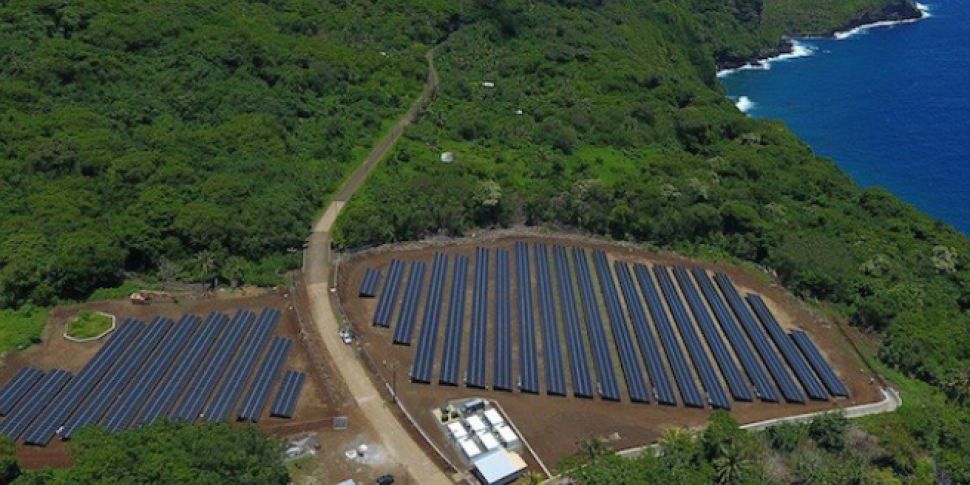A remote island in the pacific has given new meaning to the phrase ‘living life off the grid’ by switching to a massive solar energy generator that almost entirely covers its energy needs.
Days after electric car manufacturer Tesla announced its multi-billion dollar acquisition of SolarCity, the newly formed partnership is this morning basking in the announcement of a massive new solar energy showcase.
Using combined technology from both companies, the island of Ta’u in American Samoa has kicked the use of fossil fuels entirely - and switched to a solar future.
More than 6,500km off the US Coast, powering rationing and outages have been a routine part of island life for the local population for years.
Traditionally, electricity was provided by a number of diesel powered generators - with a local boat required to deliver fuel to the island’s 600 residents.
Resident shop owner Keith Ahsoon said there have been times when the boat couldn’t get out to the island for months on end.
“Once diesel gets low, we try to save it by using it only for mornings and afternoons,” he said.
“It is hard to live not knowing what’s going to happen. I remember growing up using candlelight and now, in 2016, we were still experiencing the same problems.”
After a massive construction effort however, life on the island has changed.
Video: SolarCity YouTube
Ta'u now hosts a solar power and battery storage-enabled microgrid that can supply the entire island - including the local hospital, schools and emergency services - with clean, free energy.
The microgrid is made up of 5,328 solar panels - generating 1.4 megawatts of power - and 60 Tesla Powerpacks capable of holding up to six megawatt hours of stored power.
The battery system also allows the island to use stored energy at night, meaning renewable energy is available for use around the clock and - if some weather event were to cloud the skies for a prolonged period - there would be enough power to keep the islanders going day and night, for up to three days.

Tesla Powerpacks. Image: SolarCity
The entire infrastructure was installed within the space of a year and is expected to offset the use of more than 415,000 litres of diesel annually.
Ta'u is not the first island in the world to become wholly reliant on renewables.
The Danish island of Samsø was the first island in the world to become completely powered by renewable energy with 21 wind turbines fulfilling the electricity needs of the approximately 4,000 residents.
In 2012, the island of Tokelau in the south Pacific became the first country in the world to be completely powered by renewables - through a mixture of solar and coconut biofuel powered generators.
With a dormant volcano, strong breezes and abundant sunshine to draw from, the island of El Hierro at the western edge of Spain’s Canary Islands uses water, wind and solar to power itself to self-sufficiency.
Even Scotland has pledged to become entirely reliant on renewable by 2020 - although it now looks as if the country may fall just short of that target, with a 2015 study suggesting the country is on course to generate 87% of its requirements by the target date.
SolarCity hopes this latest endeavour will be picked up as an example for similar projects around the world.
In a blog post, the company said what is happening on the island is "not a postcard from the future, it’s a snapshot of what is possible right now.”
“Renewable power is an economical, practical solution for a growing number of locations and energy needs, and islands that have traditionally relied on fossil fuels can easily transition to microgrids powered by solar and storage today.”
Mr Ahsoon said the project is, “part of making history” with the opportunity to inspire the world to lessen its carbon footprint.
“Living on an island, you experience global warming firsthand,” he said. “Beach erosions and other noticeable changes are a part of life here.”
“It is a serious problem and this project will hopefully set a good example for everyone else to follow.”









